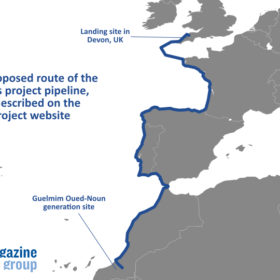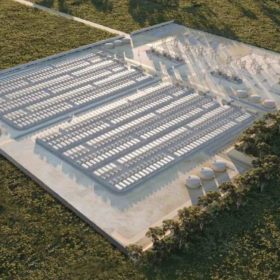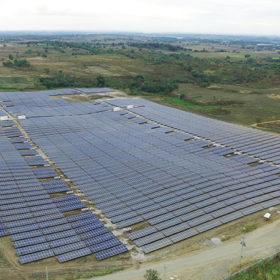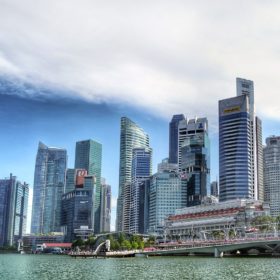Next year will bring micro and mega grids
This year has witnessed upheaval in the global energy system as inflation, geopolitical conflict, and the reality of a changing climate continue to drive the transition to cleaner energy. Next year, these trends are likely to continue and accelerate as renewable energy adoption continues to grow and the inextricable link between energy security and national security is increasingly recognized. Alan Greenshields, of US-based iron-salt flow battery maker ESS Inc, offers four predictions for 2023.
EDPR Sunseap testing solar floaters made of recycled plastic
PlasticBean, a manufacturer of recycled plastic pellets, has agreed to work with EDPR Sunseap to use 100% recycled plastic in floating PV solar projects in Indonesia, Singapore and South Korea.
Singaporean developer sizes up 1.2 GW/2.4 GWh battery in Australia
Singapore-based infrastructure developer Equis has announced plans to construct a 1,200 MW/2.4 GWh battery in Australia. It claims it will be the largest battery energy storage system to be developed in Australia and Asia.
Indonesia’s 3.5 GW solar megaproject set sights on green hydrogen
Australian independent power producer ReNu Energy has signed a deal with the developers of a proposed 3.5 GW solar-plus-storage facility in Indonesia to explore the potential large-scale production of green hydrogen for supply into Southeast Asia and beyond.
Singapore to adopt solar forecasting model
Scientists have completed a one-year trial of a model that calculates solar irradiation forecasts up to 24 hours in advance. Singapore’s Energy Market Authority now plans to adopt solar irradiance forecasting, as the model has an average error rate below 10% for one-hour forecasts.
Prefabricated BIPV wall for multi-floor buildings
Scientists in Singapore have built a plug-and-play, multi-layered, building-integrated PV wall that can be installed without scaffolds. The system has a light-gauge steel support structure, with a system to block air and rainwater at the wall connection.
Weekend read: Southeast Asian interconnection
While near neighbors, the electricity generation of the countries of Southeast Asia couldn’t be further apart. Indonesia burns locally mined coal; Malaysia has reserves of oil and gas; and populous Singapore, Vietnam, and the Philippines depend on fossil fuel imports. They could all benefit from increased solar electricity but higher grid capacities and interconnection are key for an opportunity to unlock the power of the sun.
Floating solar combined with wave, tidal, wind power
A consortium of Singaporean universities and companies will study the feasibility of integrating a hybrid floating solar project with ocean, tidal, and wind capacity. If successful, the parties plan to deploy a pilot system with at least 100 MW of renewables capacity.
The Hydrogen Stream: Singapore sees hydrogen supplying up to half of its power needs by 2050
The Southeast Asian country considers hydrogen as a key potential decarbonisation pathway, seeing business opportunities in three related specific fields: finance, shipping and aviation. Meanwhile, Evos, Hydrogenious, and Port of Amsterdam bet on thermal oil benzyl toluene for delivery of hydrogen before 2028.
In Asean nations it’s all about the solar
Indonesia will have to get to work installing more than 24 GW of solar this year – and every year – if the region is to achieve the 2.1 TW to 2.4 TW of photovoltaics Irena has estimated it will require to achieve a net zero carbon energy system by 2050.










